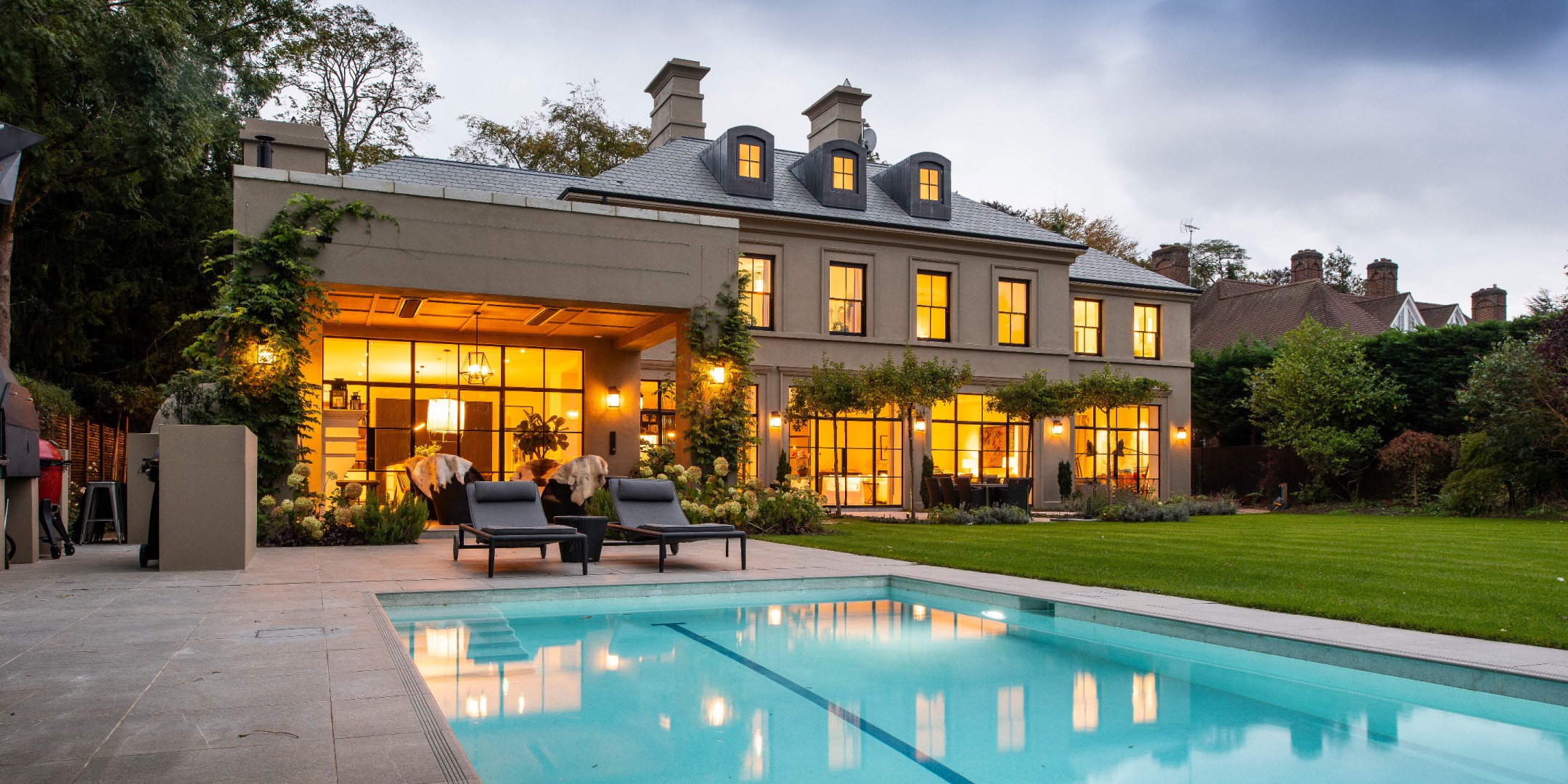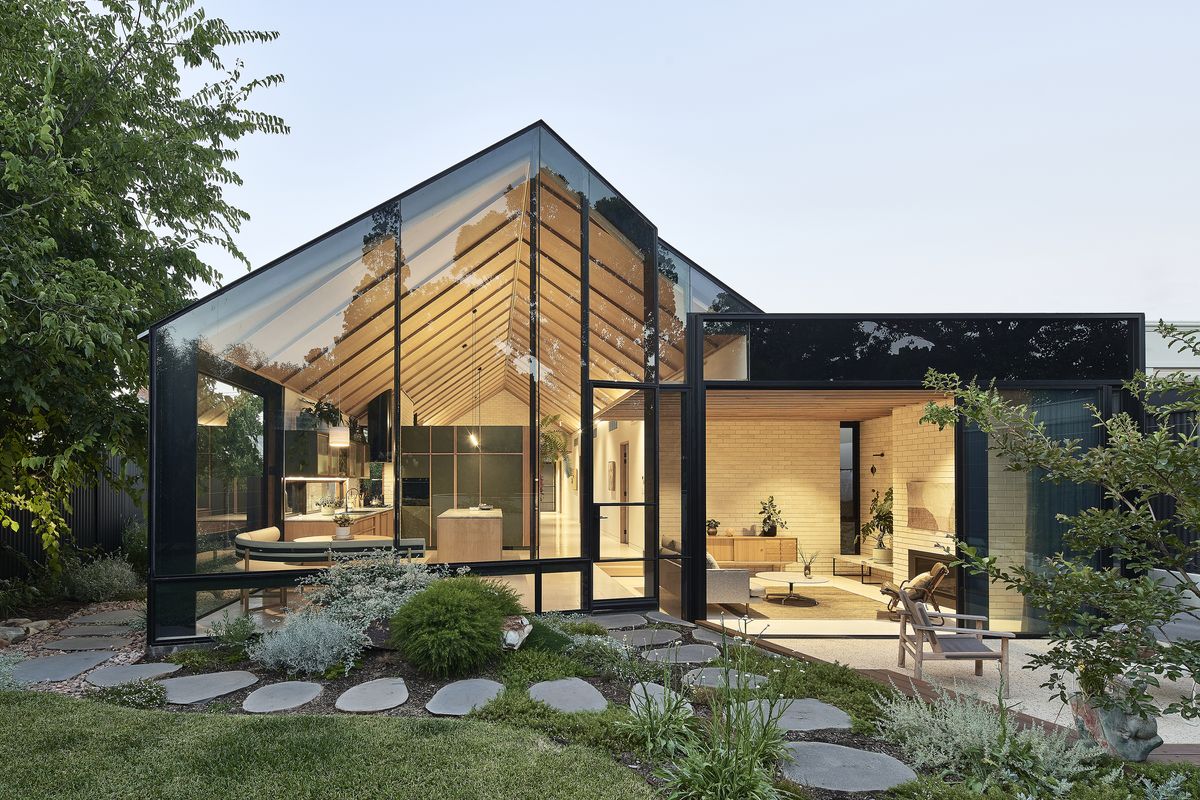Residential Architects: Creating Beautiful, Functional Spaces for Every Home
Residential Architects: Creating Beautiful, Functional Spaces for Every Home
Blog Article
Leading Patterns in Residential Design You Should Understand About
As household architecture remains to develop, numerous compelling trends are forming the method we design and occupy our space. Trick growths such as sustainable structure practices, the integration of smart home innovation, and the surge of modular homes highlight a considerable shift in the direction of both functionality and ecological responsibility. Furthermore, principles like open plan living and biophilic design are redefining our communication with room and nature. Understanding these trends not just informs style options however also exposes more comprehensive ramifications for way of living and area - residential house architect. What might these developments imply for the future of domestic living?
Lasting Structure Practices
An increasing number of residential projects are embracing sustainable building practices, driven by a growing recognition of environmental influence and power performance. This shift is characterized by the integration of environment-friendly products, energy-efficient layouts, and innovative building and construction methods. Building contractors and property owners are increasingly prioritizing making use of renewable energies, such as bamboo and recycled metals, which not only reduce the carbon impact yet additionally improve the sturdiness and visual allure of residential properties.
Integrating energy-efficient systems is one more essential element of sustainable structure - residential house architect. Functions such as high-performance insulation, energy-efficient windows, and photovoltaic panels are ending up being criterion in new household styles. These elements not just contribute to lower energy intake however likewise give considerable lasting cost savings for homeowners
In addition, the layout of sustainable homes often stresses natural light and ventilation, lowering the reliance on fabricated lighting and environment control systems. Landscaping methods, such as xeriscaping, more advertise sustainability by lessening water usage.
As the demand for lasting living options remains to climb, the residential style sector is positioned to adjust and innovate, ensuring that future homes are not just ecologically liable however functional and additionally comfortable for their owners. - residential house architect
Smart Home Technology
Smart home innovation is transforming the method homeowners communicate with their space, enhancing comfort, power, and safety administration. This ingenious strategy integrates different devices and systems, allowing customers to regulate their homes from another location or with automated processes. Central to this fad is making use of clever devices such as thermostats, lights, security cameras, and home appliances, all connected via the Internet of Things (IoT)
Among the most appealing features of smart home modern technology is the capability to personalize settings for optimum energy effectiveness. House owners can keep an eye on energy use and adjust cooling, lighting, and heating based upon their regimens, substantially minimizing energy expenses. Innovative safety systems equipped with clever locks and security cams provide peace of mind, enabling remote monitoring and notifies to potential security breaches.
Assimilation with voice-activated assistants enhances user experience, permitting homeowners to regulate gadgets with easy voice commands. As innovation remains to develop, the potential for smart home systems to improve lifestyle expands, making them an essential factor to consider in contemporary residential style. Ultimately, wise home modern technology is not just a pattern however an essential change toward much more intelligent living atmospheres.
Open Principle Living
Open concept living has become a defining attribute in contemporary domestic style, identified by the removal of traditional obstacles between areas. This design philosophy promotes fluidity and connectivity within the home, enabling a seamless change between locations such as the kitchen area, dining, and living spaces. By removing walls and partitions, open idea formats develop a sense of space, cultivating an inviting atmosphere that improves social interaction.

Moreover, this technique to domestic layout lines up with minimalism, concentrating on practical simpleness and aesthetic comprehensibility. Home owners value the adaptability of these designs, which can be easily adapted to reflect individual design via furniture arrangement and decoration. As open principle living remains to obtain grip, it stays a testimony to progressing family dynamics and the need for homes that improve connection and comfort.
Biophilic Design
Biophilic design has come to be increasingly significant in property architecture, highlighting the inherent connection between people and nature. This style viewpoint seeks to integrate natural environments into living spaces, thus promoting a feeling of health and boosting the lifestyle for residents. By integrating attributes such as all-natural light, greenery, and natural products, biophilic layout promotes an unified relationship between indoor atmospheres and the environment.
Trick components of biophilic layout include huge home windows that give unhampered sights of outside landscapes, living walls that introduce greenery into interiors, and open flooring plans that motivate air flow and natural light penetration. Water features, both inside and outside the home, offer to produce soothing atmospheres and enhance sensory experiences.
Additionally, making use of sustainable products not only supports environmental stewardship but likewise adds to much healthier interior air high quality. As understanding of environmental problems boosts, home owners are significantly focusing on layouts that reflect their connection to nature. Essentially, biophilic layout not only boosts aesthetic charm but additionally addresses emotional and psychological Continued requirements, making it an important trend in modern domestic architecture.
Modular and Prefab Residences

In addition, prefab and modular homes are designed with sustainability in mind. Numerous manufacturers utilize energy-efficient systems and environmentally friendly materials, such as solar panels and advanced insulation techniques, adding to minimized energy usage and lower utility costs for homeowners. The flexibility of layout choices enables modification, catering to diverse functional needs and visual choices.
As the demand for cost effective real estate continues to rise, prefab and modular homes offer a feasible service, addressing both financial and environmental difficulties. Neighborhoods are increasingly identifying the capacity of these structures, integrating them into city and country settings. Overall, the trend towards modular and prefab homes signifies a change toward extra sustainable, reliable, and adaptable living atmospheres, making them a critical facet of contemporary residential design.
Conclusion
Sustainable building methods and wise home modern technologies enhance efficiency and benefit, while open idea living and biophilic style foster social interaction and a connection to nature. The rise of prefab and modular homes uses personalized and budget friendly remedies, mirroring a broader shift towards functional and responsible living.
Key growths such as lasting structure methods, the combination of wise home innovation, and the rise of modular homes underscore a substantial change towards both performance and environmental responsibility.The rise of prefab and modular homes has actually transformed the residential architecture landscape, supplying innovative remedies for efficient and lasting living.In addition, prefab and modular homes are made with sustainability in mind. Generally, the pattern toward prefab and check out here modular homes represents discover this info here a shift towards a lot more sustainable, reliable, and adaptable living atmospheres, making them a pivotal facet of contemporary property style.
Sustainable structure practices and clever home innovations enhance performance and ease, while open principle living and biophilic layout foster social communication and a connection to nature.
Report this page